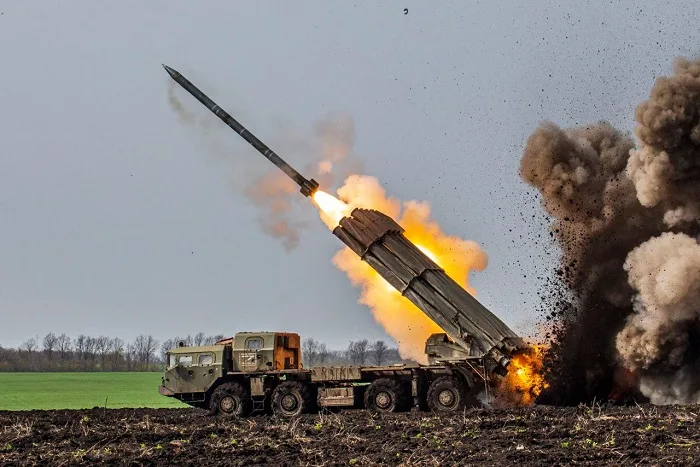Russia said on Friday that it has managed to disrupt the transportation of weapons, including those supplied by NATO countries, by carrying out massive air and sea missile strikes at the Ukrainian facilities on January 26.
Detailing the progress of Moscow’s ongoing ‘Special Military Operation’ in Ukraine, Russian Defence Ministry spokesperson Lieutenant General Igor Konashenkov said that long-range precision weapons – air, sea-based as well as unmanned aerial vehicles – were used to target the facilities of the energy system that ensured the functioning of enterprises of the military-industrial complex and the transport system of Ukraine.
“The goals of the massive strike have been achieved. All assigned objects are hit. As a result of the strike, the transportation of weapons and ammunition to the areas of hostilities, including those supplied by NATO countries, was disrupted. The work of the production facilities of enterprises for the repair and restoration of military equipment of the Armed Forces of Ukraine was disrupted,” Konashenkov said on Friday during his daily briefing.
The State Emergency Service of Ukraine said that, as a result of the Russian missile attacks on 11 regions of Ukraine, 11 people lost their lives on January 26 with several buildings damaged in the Kyiv region.
Today, Russian missile troops hit an S-300 air defense position area in the Kharkiv region with a Tornado-S strike.
as a result of the hit, at least two S-300 SAM launchers were completely destroyed. two more installations and a radar station were also damaged pic.twitter.com/7SSzZBYK0n
— David Kime (@CyberRealms1) January 27, 2023
The strikes launched by the Russian Armed Forces came less than 24 hours after Germany announced on Wednesday that it will deliver 14 Leopard 2 A6 main battle tanks to Ukraine for its defence.
The government led by Chancellor Olaf Scholz also committed, after “intensive consultations” with closest partners, that the package also includes logistics, ammunition and maintenance of the systems besides the training of the Ukrainian crews in Germany.
German Defence Minister Boris Pistorius, who stated that the first tanks from Germany could be in Ukraine in three months, described the delivery as possibly being an “important game changer” in the war in Ukraine.
On the same day, US President Joe Biden announced that the United States will provide Ukraine with 31 M1 Abrams tanks – the required number to equip an entire Ukraine tank battalion.
“The Abrams tanks are the most capable tanks in the world. They’re also extremely complex to operate and maintain, so we’re also giving Ukraine the parts and equipment necessary to effectively sustain these tanks on the battlefield,” said the US President.
The US President made the decision after “a long conversation” with NATO allies, including Scholz, French President Emmanuel Macron, United Kingdom Prime Minister Rishi Sunak and Italian Prime Minister Giorgia Meloni regarding continued close coordination and support of Ukraine.
Today, I announced that the United States will send 31 Abrams tanks to Ukraine – evidence of our enduring and unflagging commitment to Ukraine and our confidence in the skill of Ukrainian forces.
As I told President Zelenskyy, we’re with Ukraine for as long as it takes. pic.twitter.com/OvG3Yh55kx
— President Biden (@POTUS) January 25, 2023
Canada too announced that it is sending four combat-ready Leopard 2 main battle tanks to Ukraine in the coming weeks accompanied by ammunition, spare parts, and the deployment of Canadian Forces trainers.
Meanwhile, Russian Ambassador to the United States A I Antonov termed Washington’s decision to send M1 Abrams tanks to Kyiv as yet another “blatant provocation” against the Russian Federation.
“American tanks will be destroyed by our military in the same way as all other samples of NATO equipment are destroyed,” he said on Wednesday.




















